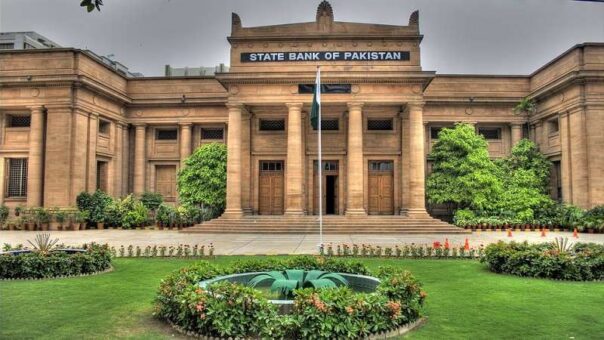Karachi, February 28, 2024 – Alarming figures released by the State Bank of Pakistan (SBP) reveal that the government’s bank borrowing has surged beyond Rs 4 trillion by mid-February of the current fiscal year.
This surpasses the total borrowing for the entire fiscal year of 2022-23, posing significant challenges for future fiscal management.
Official data indicates that from July 1 to February 16 of the fiscal year 2023-24, the government’s total borrowing from commercial banks reached Rs 4.05 trillion. In stark contrast, the corresponding period in the previous fiscal year saw borrowing at Rs 1.47 trillion, marking an extraordinary increase of 175 percent. The total government bank borrowing for the entire fiscal year 2022-23 stood at Rs 3.72 trillion.
While the government has managed to retire an amount of Rs 1 trillion against borrowing from the State Bank during the same period, a considerable increase from Rs 380 billion in the last fiscal year, concerns arise over the sustainability of such aggressive borrowing for budget financing.
Analysts express reservations about the potential challenges this level of borrowing could pose for the new government in the future. With the prevailing high-interest rates, the cost of borrowing becomes a significant concern, especially with the existing benchmark policy rate of the SBP standing at 22 percent.
The government’s substantial reliance on borrowing has also impacted the availability of resources for credit to the private sector. Banks extended loans to the private sector amounting to Rs 111.35 billion during July 1 to February 16 of the fiscal year 2023-24, a significant decline from Rs 465 billion in the same period of the previous fiscal year.
The restrictive availability of credit to the private sector could potentially hinder economic growth and business expansion, leading to concerns among business communities and investors. The government’s focus on aggressive borrowing for budgetary needs has inadvertently created a challenging economic environment, with potential implications for the broader financial landscape.
As these borrowing trends continue, policymakers face the dual challenge of managing fiscal stability while ensuring adequate credit availability to foster economic growth. The coming months will be critical in determining the impact of the government’s borrowing spree on the overall economic landscape and the measures that may be taken to address the emerging challenges.
